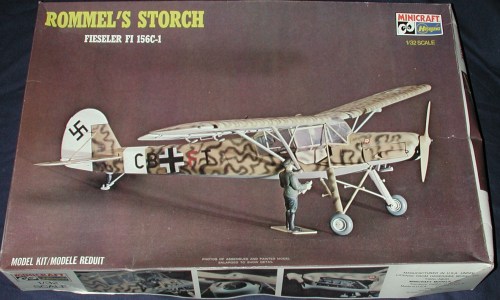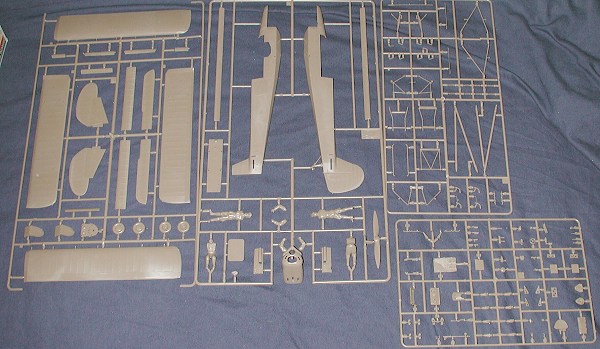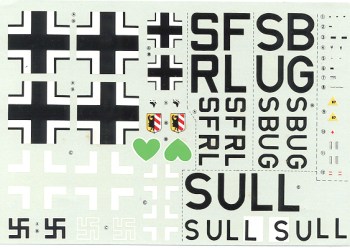
|
KIT: |
Hasegawa 1/32 Fieseler 'Storch' |
|
KIT # |
1141 |
|
PRICE: |
$? |
|
DECALS: |
Three options |
|
REVIEWER: |
Scott Van Aken |
|
NOTES: |
Minicraft boxing |

|
HISTORY |
The Fieseler Fi-156 'Storch' Stork was developed from a 1935 requirement for an army co-operation, casualty evacuation and general liaison aircraft. The Fieseler entry was far and away the most useful of the entries. It even went farther than the others in its ability to operate from small areas. Thanks to Fieseler's high lift wing, it was able to take off in 210 feet, land in 60 feet and was able to hover in a 25 mph head wind! Powered by a 240 hp Argus AS 10C inverted-vee air-cooled engine, it was able to reach a maximum speed of 109 mph, but frankly, high speed was never a requirement!
The prototype first flew in 1936 and over 2,500 were built by many companies. The French firm of Morane-Saulnier built a version with a small radial engine and the plane was also built in Czechoslovakia. Many still exist on the civil register in a number of countries.
|
THE KIT |

Molded in the mid-1970s when raised panel lines were still the norm, Hasegawa took quite a chance when doing this kit. The Storch hasn't exactly been on the top of everyone's list of 'kits to build' even today, probably because of the large areas of glass and the lack of 'cool'.
As befits a 1/32 kit, there are lots of interior
detail parts, including a pilot, various bits and pieces for the cockpit
side walls, an interior framework and even a pilot to trap inside the
cage that makes up the i nterior.
The kit can be built with the starboard door open if you wish. A fully
detailed engine is also included and a very respectable Argus inverted
V-8 can be made from what is included. To ensure that the landing gear
will be able to take the strain of all that plastic, pre-bent wire is
included to give it the needed extra strength. There are lots of struts
and actuators for this kit as it isn't a sleek plane by any stretch.
nterior.
The kit can be built with the starboard door open if you wish. A fully
detailed engine is also included and a very respectable Argus inverted
V-8 can be made from what is included. To ensure that the landing gear
will be able to take the strain of all that plastic, pre-bent wire is
included to give it the needed extra strength. There are lots of struts
and actuators for this kit as it isn't a sleek plane by any stretch.
Instructions are quite complete and provide both drawings and photos. Colors are given where needed but by generic name and not RLM reference. Markings are provided for three planes. First is the box art aircraft in desert camouflage. Next is an RLM 70/71/65 hack as used by the 'Green Hearts' while stationed in Russia and includes the Eastern Front yellow markings. The third is the famous 'Mussolini Rescue' Storch in RLM 70 over RLM 65. Decals are nicely done and probably printed by Microscale.
|
CONCLUSIONS |
Though probably not everyone's cup of tea, the kit does look most impressive when built and is actually quite large; bigger than a 109. It is easy enough to find and if there are none on the hobby shop shelves, swap meets will generally have them.
If you would like your product reviewed fairly and quickly by a site that has nearly 250,000 visitors a month, please contact me or see other details in the Note to Contributors.